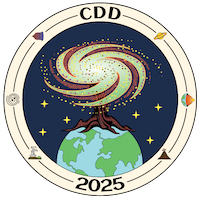Planetary magma oceans were ubiquitous on terrestrial planets in the early Solar System and enabled their differentiation into a silicate mantle and an iron-rich core (metal-silicate differentiation). Over time, these large-scale magma oceans progressively solidified due to secular cooling, and their crystallization led to the formation of the main petrological and geochemical reservoirs in...
From May 2018 to the end of 2020, an underwater eruption gave birth to a new volcanic edifice, the Fani Maoré, 50 km east of Mayotte (Indian Ocean). Today, concerns on the volcanic activity in the area persist, and scientific community and authorities are on the lookout for signs of changes in volcanic activity.
Magmatic degassing can be observed on Petite-Terre Island of Mayotte...
The magmatic upper crust is generally divided into Layer 2A and Layer 2B, where Layer 2A is interpreted to consist of lava flows and Layer 2B of dikes, although hydrothermal alteration processes have also been suggested to define the Layer 2A/2B boundary. Using 3D seismic reflection method at the Axial Volcano in the Eastern Pacific, we have recently imaged > 3 km of layered lava flows that...
Oceanic Transform Faults (OTFs) are active, strike-slip plate margins, which offset the mid oceanic ridges and form the Ridge Transform Intersections (RTI) on either ends. Beyond the active part, OTF’s fossil record is preserved as Oceanic Fracture Zone (OFZ), which eventually subducts at the convergent margins and often exhibits higher hydration/alteration and distinct mechanical properties...
The recent Juno and Cassini space missions delivered a wealth of observations of Jupiter and Saturn.
Constraints from gravity data and ring seismology suggest that these planets host a dilute core of substantial size, in which the concentration of heavy material increases with depth.
This stabilising compositional gradient coexists with a destabilising thermal gradient induced by the...

